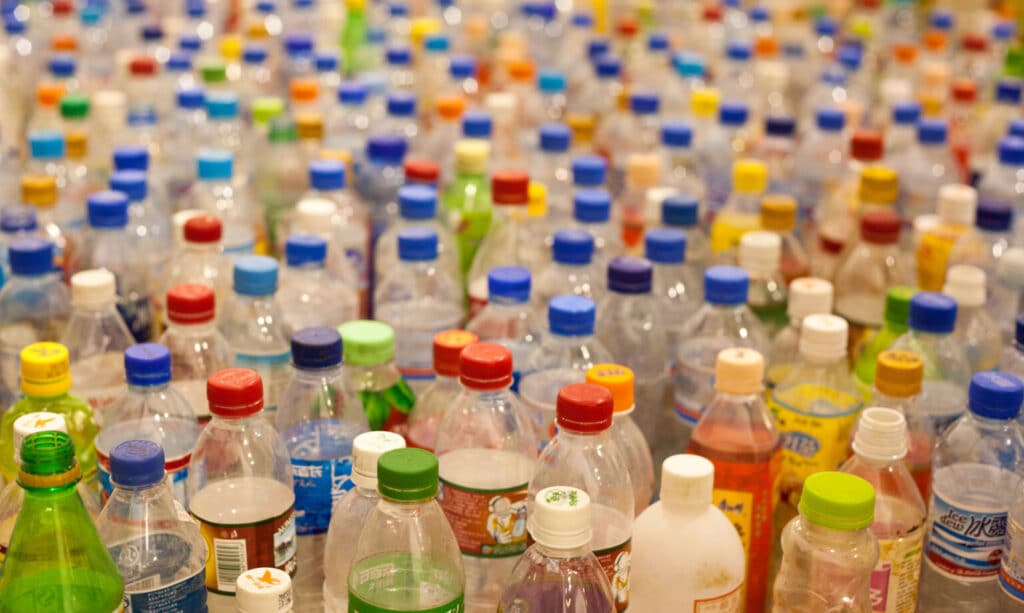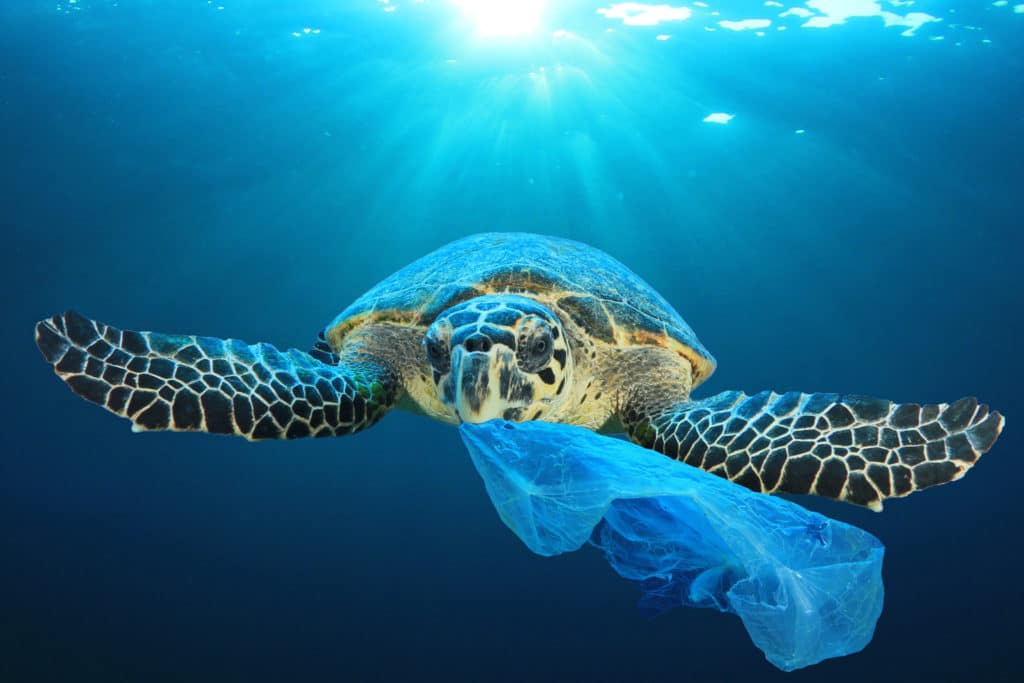It’s impossible to completely avoid microplastics, but you can reduce your exposure. Here’s how.

Microplastics are everywhere. In oceans, rivers, lakes, and streams, as well as in the air, arctic sea ice, and soil. That means there are microplastics in the water we drink and the food we eat.
Nice work, humans.
From surface water to deep-sea sediment, from mussels to muscles, these tiny pieces of plastic wreak havoc on human health and the environment.
How big is the microplastics problem?
Microplastics are less than 5 mm in size. The problem of microplastics is huge.
While negotiations continue for a global plastics treaty, estimates suggest that around 2 million tonnes of plastic waste ends up in the oceans each year.
In 2014, researchers estimated that there were at least 5.25 trillion plastic particles in the oceans. That was 10 years ago.
The reality now is even worse, given that global plastic production has risen from 1.5 million tonnes in 1950 to more than 400 million tonnes in 2023.
Where do microplastics come from?
Secondary microplastics are pieces of plastic measuring less than 5 mm that break off from larger plastic pieces when they degrade. The primary cases of plastic fragmentation are:
- Radiation (such as from the sun)
- Heat
- Friction.
Every time you wear shoes with a synthetic sole or wash and dry synthetic fabrics, you’re producing microplastics.
One synthetic clothing item can produce more than 1900 microfibers per wash.
Primary microplastics are also used intentionally by some manufacturers. These can be found in products such as facial cleansers and other personal hygiene and cleaning products.
Microplastics and health
We still don’t know the full impact of microplastics on health. However, research so far suggests that microplastics raise the risk of:
| Physical irritation, organ and tissue damage, and inflammation | Microplastics have been found in numerous bodily tissues, including the brain, placenta, lungs, and heart |
| Increased exposure to persistent organic pollutants (POPs) and other toxic chemicals | Microplastics can absorb these and bring them into the body |
| Endocrine (hormonal) disruption, reproductive problems, and developmental abnormalities | Thought to be due to phthalate or BPA exposure from plastics |
| Gastrointestinal issues: blockages, ulcers, inflammation, pain and discomfort | Microplastics are small enough to lodge in tissues and build up over time in the gut |
| Immune system problems | Including increased risk of infection |
| Respiratory issues | Including asthma, bronchitis, and lung inflammation |
| Cancer | From chronic exposure to and accumulation of carcinogenic chemicals in ingested or inhaled microplastics |
| Heart attacks and stroke | Microplastics in arteries can cause blockages and inflammation |
A recent study looking at more than 200 adults undergoing surgery found that nearly two thirds (60%) had microplastics or nanoplastics in a main artery. These adults were 4.5 times more likely to have a heart attack or stroke, or to die in the 34 months after surgery, compared to folks with plastic-free arteries.
How to avoid microplastics
The good news is that there are ways to minimize your exposure to microplastics.
1. Skip single-use plastics

Find and use reusable versions of the following:
- Plastic water bottles
- Disposable coffee cups with plastic lids
- Bags
- Utensils
- Straws.
Better options include: Stainless steel, glass, and bamboo.
See our top picks for reusable water bottles.
2. Skip synthetic fibers


Avoid clothing, bedding, towels, upholstery, bags, shoes, and other items made with virgin (new):
- Polyester
- Nylon
- Acrylic
- Microfibers
- Microsuede.
Choose natural fibers instead, such as:
3. Get a good water filter

Tap water can contain many harmful contaminants, including microplastics:
- Consider a whole-home water filtration system for the best results
- Otherwise, use a countertop water filter
- Install a water filter for your shower
If you’re on a road-trip, cycle touring, or camping, consider using a water bottle with a built-in filter for on-the-go safety (such as Grayl’s!).
4. Skip the seafood

Microplastics quickly accumulate in fish, shellfish, and other types of seafood.
- Choose sustainable sources if eating these foods
- Skip these foods entirely and help prevent overfishing!
The greatest risk appears to be from eating bivalves like oysters and seafood with high concentrations of sediment, such as sea cucumbers. Larger fish also contain microplastics, too. One study found hundreds of pieces of microplastic in a single can of tuna.
5. Choose whole foods

Don’t smother your food in plastic. Instead, avoid plastic food packaging:
- Favor unprocessed foods in their natural skins and shells
- Buy in bulk
- Choose loose leaf tea instead of tea bags (which are often plastic)
- Frequent zero-waste stores where you can fill your own jars and bags
- Use organic cotton food bags for fruits and vegetables
- Switch to reusable wax food wraps instead of plastic sandwich bags and plastic wrap.
6. Choose organic ingredients

Agriculture is responsible for massive amounts of global pollution, including microplastic pollution.
Famers use plastic intentionally in:
- Fertilizer pellets
- Crop and silage covers
- Wind tunnels
- Pesticide pellets
- Plastic-encapsulate seeds.
All of this degrades or is burned, releasing microplastics into soil, air, and water. Ironically, plastic pollution actually decreases plant yields, reinforcing the vicious cycle.
Choosing organic produce and ingredients helps farmers reduce their use of all of the above. Choosing local produce also cuts out the need for plastic packaging for transporting fruits, nuts, meat, fish, and veggies.
7. Avoid intentional microplastic ingredients


Some toothpastes, scrubs, and even laundry detergent contain microplastics:
- Choose natural personal care products that are microbead-free and plastic-free
- Make sure any glitter is plastic-free (for nail polish, make-up, arts and crafts)
- Use natural detergents and homemade cleaning products
- Buy in bulk to reduce incidental plastic consumption.
Help with the clean-up

Being a conscious consumer helps to reduce demand for plastic products. This doesn’t solve the existing plastic pollution problem, though.
Here are some ways to support efforts to clean up the Earth’s waterways and land:
- Participate in a beach clean-up
- Use local recycling facilities
- Know your plastics – which ones can and can’t be recycled (bioplastics included!)
- Collect recycling from neighbors, family, and friends without transport
- Invest in companies working on clean-up technologies and plastic recycling initiatives.
Like most problems, it also helps to talk about plastic pollution. While most folks have gotten the memo, it’s not always clear how to take action. Everyone can do something to help, so lead by example and start conversations to raise awareness.
Finally, it’s vital to understand that while every individual action counts, especially to reduce your personal exposure to microplastics, the biggest obstacle to reducing plastic pollution is the ongoing production by the oil industry. Help steer the global ship by voting for politicians who care about the environment and have a clear understanding of the perils of plastic.